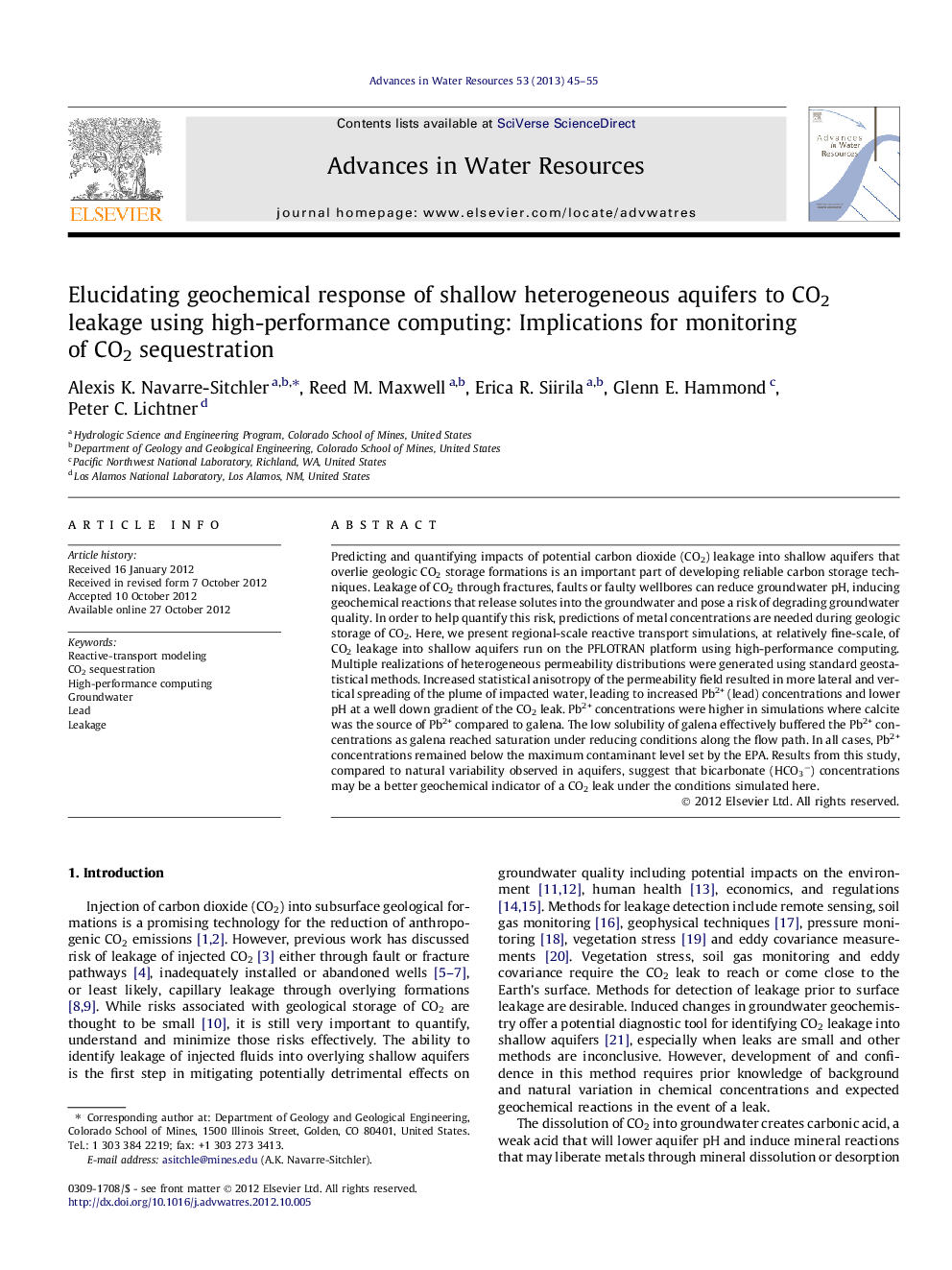| Article ID | Journal | Published Year | Pages | File Type |
|---|---|---|---|---|
| 4525761 | Advances in Water Resources | 2013 | 11 Pages |
Predicting and quantifying impacts of potential carbon dioxide (CO2) leakage into shallow aquifers that overlie geologic CO2 storage formations is an important part of developing reliable carbon storage techniques. Leakage of CO2 through fractures, faults or faulty wellbores can reduce groundwater pH, inducing geochemical reactions that release solutes into the groundwater and pose a risk of degrading groundwater quality. In order to help quantify this risk, predictions of metal concentrations are needed during geologic storage of CO2. Here, we present regional-scale reactive transport simulations, at relatively fine-scale, of CO2 leakage into shallow aquifers run on the PFLOTRAN platform using high-performance computing. Multiple realizations of heterogeneous permeability distributions were generated using standard geostatistical methods. Increased statistical anisotropy of the permeability field resulted in more lateral and vertical spreading of the plume of impacted water, leading to increased Pb2+ (lead) concentrations and lower pH at a well down gradient of the CO2 leak. Pb2+ concentrations were higher in simulations where calcite was the source of Pb2+ compared to galena. The low solubility of galena effectively buffered the Pb2+ concentrations as galena reached saturation under reducing conditions along the flow path. In all cases, Pb2+ concentrations remained below the maximum contaminant level set by the EPA. Results from this study, compared to natural variability observed in aquifers, suggest that bicarbonate (HCO3−) concentrations may be a better geochemical indicator of a CO2 leak under the conditions simulated here.
Graphical abstractFigure optionsDownload full-size imageDownload as PowerPoint slideHighlights► CO2 leakage in shallow heterogeneous aquifers with high-performance computing. ► Groundwater pH decreases and lead concentrations increase as minerals dissolve. ► Lead concentrations vary with statistical anisotropy, well pumping and mineralogy. ► Bicarbonate concentrations may be better indicator than pH of CO2 leakage.
